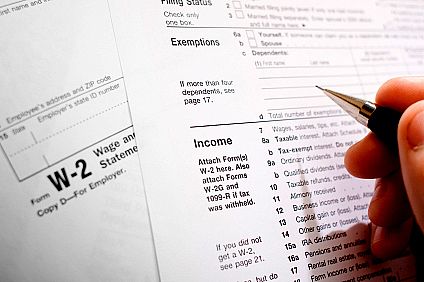The Internal Revenue Service ("IRS"), has just released their annual limits for 2023. Yes, this is the kind of thing that gets me all excited. It must be hard for the IRS, whose sole purpose is to collect taxes, to furnish us the new limits allowing for greater tax savings for astute health plan participants who like to save money and make the most out of our estate planning. This does not mean we do not believe in paying our fair share ... it only means we do not like to pay more than our fair share.
Read MoreNo Health Insurance - IRS Shows Us How Penalty Is Calculated
 If your like me ... you may have thought the IRS penalties imposed for not having health insurance under the new ACA federal healthcare rules simply utilized the greater of 1% or $95 calculation by applying 1% times adjusted gross income.
If your like me ... you may have thought the IRS penalties imposed for not having health insurance under the new ACA federal healthcare rules simply utilized the greater of 1% or $95 calculation by applying 1% times adjusted gross income.
This week, Ed Oleksiak, JD, Holmes Murphy's national compliance lead, walked our consulting teams through how the the IRS will apply the penalty. So the 1% individual penalty is not just 1% times your income. You actually subtract a base amount which is the minimum thresholds for being required to file a tax return determined by filing status and then the 1% is multiplied times the resulting net income amount. The starting amount is household income. We are including a definition and example below.
Household income is the adjusted gross income from your tax return plus any excludible foreign earned income and tax-exempt interest you receive during the taxable year. Household income also includes the incomes of all of your dependents who are required to file tax returns.
Example: Single individual with $40,000 income
Jim just plain does not like politics or federal mandates. He is an unmarried gun-toting, iPhone 5s carrying young invincible with no dependents. He pays service fees each month to access his Match.com account ... but feels paying monthly health insurance premiums does not help him with the ladies. Jim does not have minimum essential coverage for any month during 2014 and does not qualify for an exemption. For 2014, Jim's household income is $40,000 and his filing threshold is $10,150.
To determine his payment using the income formula, subtract $10,150 (filing threshold) from $40,000 (2014 household income). The result is $29,850. One percent of $29,850 equals $298.50.
Jim's flat dollar amount is $95.
Because $298.50 is greater than $95 (and is less than the national average premium for bronze level coverage for 2014), Jim's shared responsibility payment for 2014 is $298.50, or $24.87 for each month he is uninsured (1/12 of $298.50 equals $24.87).
Jim will make his shared responsibility payment for the months he was uninsured when he files his 2014 income tax return, which is due in April 2015.
2014 Federal Tax Filing Requirement Thresholds
|
Filing Status |
Age |
Must File a Return If Gross Income Exceeds |
|
Single |
Under 65 |
$10,150 |
|
65 or older |
$11,700 |
|
|
Head of Household |
Under 65 |
$13,050 |
|
65 or older |
$14,600 |
|
|
Married Filing Jointly |
Under 65 (both spouses) |
$20,300 |
|
65 or older (one spouse) |
$21,500 |
|
|
65 or older (both spouses) |
$22,700 |
|
|
Married Filing Separately |
Any age |
$3,950 |
|
Qualifying Widow(er) with Dependent Children |
Under 65 |
$16,350 |
|
65 or older |
$17,550 |
